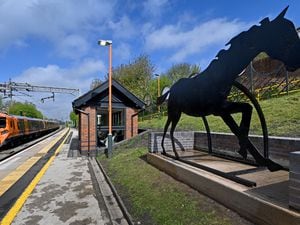30 years on from Challenger space shuttle disaster
It was 73 seconds that shocked the world.
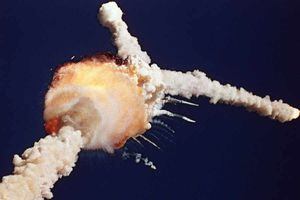
After multiple delays, the Challenger space shuttle blasted off on mission STS-51L at 11.38am at Cape Canaveral, Florida 30 years ago today.
A fiery explosion broadcasted in national television for days after the accident left a mark in the public imagination.

Even deeper was the impact on NASA. Blinded by the success of the early Shuttle flights, the Agency's management had developed a careless attitude towards warnings coming from the engineering community. NASA had committed the Shuttle to an impossible schedule even before it entered in service in order to ensure funding. Over time, NASA managemeent had grown increasingly impatient with the technical delays that operating such a complex machine required.
It was the second of 16 missions planned for 1986 as the space agency struggled to meet a brutal schedule that included the back-to-back launches in May, five days apart, of two planetary probes from shuttles carrying complex hydrogen-fueled Centaur boosters.
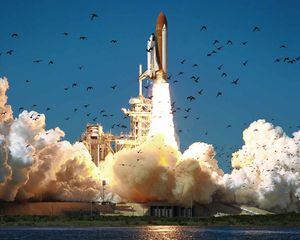
The flight schedule also included a high-priority astronomy mission, the first military shuttle flight into polar orbit from Vandenberg Air Force Base in California, launch of the Hubble Space Telescope and the first fight of a journalist who would become the second so-called 'private citizen' to fly in space.
The first was to be Christa McAuliffe, a New Hampshire high school teacher who won a nationwide competition to teach lessons from space.
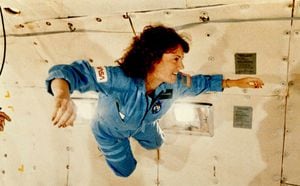
NASA wanted to find an 'ordinary person' – a gifted teacher who could communicate with students while in orbit. The idea was that sending a teacher into space would increase public interest in the Space Shuttle program, and also demonstrate the reliability of spaceflight at a time when the agency was under continuous pressure to find financial support.
McAulliffe was selected out of an initial pool of 110,000 applicants. After the selections she became a celebrity, appearing as a guest in many television show. Her manners conquered the American public.
She was strapped into a seat on Challenger's lower deck, between Ronald McNair on her left and Hughes Aircraft Co. satellite engineer Gregory Jarvis on her right.
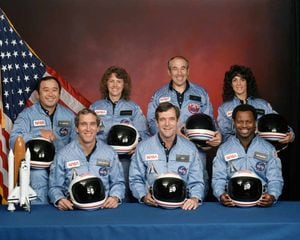
Seated on the orbiter's upper deck were commander Dick Scobee, pilot Michael Smith, flight engineer Judy Resnik and Ellison Onizuka. McAuliffe, Jarvis and Smith were rookies making their first flight while the rest were shuttle veterans.
After all, it was the 25th shuttle flight and the first of 16 planned for 1986. Space travel had become the norm, and as a result news agencies were backing off expensive, remote coverage of what increasingly appeared to be a routine event.
Only a few hundred media credentials had been requested, and far fewer than that actually showed up.
Many of the big league science writers had chosen to skip the event in favour of the Voyager 2 probe's flyby of Uranus four days earlier.
It was that reason that led to rookie reporter William Harwood being in situe at the Kennedy Space Center press site, some 3.4 miles from the launch pad.
He was stationed in United Press International's (UPI) 60-foot-long office trailer in the spot usually taken by UPI's veteran science editor Al Rossiter Jr.
With Rossiter still in Pasadena for the final briefing on the Uranus encounter, Harwood was tasked with putting together a story for the afternoon news cycle that would go out the moment Challenger began moving.
The general view among the gathered hacks was that the cold front that had swept across central Florida the night before would lead to the postponement of the launch.
Temperatures had dropped below zero before slowly creeping back above freezing as the morning wore on. Ice at the launch pad was a major concern, interrupting the countdown for additional inspections and delaying lift-off to later in the morning.
"I came in just after midnight to monitor the shuttle's fueling," Harwood recalled.
"The baseboard heaters in the UPI trailer were cranked up all the way, but I still wore a heavy coat and hat as I monitored the countdown. By Florida standards, it was brutal."
Harwood said that none of those gathered in preparation for the launch knew that the cold had affected the fuel segments making up Challenger's two solid-propellant boosters, or that a failure to its critical O-ring seals could result in a catastrophic burn through.
Despite the concerns the launch went ahead.
Harwood said he was chatting on the phone with his editor in Washington who would push the 'send' button on his story as soon as Challenger's boosters ignited.
"Looking out the window, with Challenger out of sight behind its exhaust plume, I didn't immediately realise what had happened," he said.
It was a cold day after a night of sub-freezing weather, but the sky was clear and Challenger put on a thrilling show as it climbed away atop a churning trail of fiery exhaust. Moments later, the crackling roar of those huge boosters reverberated across the liftoff site.
At first, the liftoff appeared normal enough. But 73 seconds later, as the shuttle was passing through 46,000 feet at a velocity just under twice the speed of sound, the spacecraft was engulfed in a sudden maelstrom of fiery vapour and debris.
A plume appeared to expand and contrails of some sort could be seen shooting out. First one and then the other solid-fuel booster careened away from the ballooning conflagration, corkscrewing aimlessly through the sky.
Shocked onlookers knew something unusual and probably catastrophic had occurred, but it took several agonising moments for the severity of the problem to sink in. Some began wondering if Scobee and Smith might be attempting an emergency return-to-launch-site – RTLS – abort.
NASA commentator Steve Nesbitt in mission control at the Johnson Space Centre in Houston did not immediately realise what had happened as he read off trajectory data from his console's display: "One minute 15 seconds. Velocity 2,900 feet per second (1,977 mph). Altitude 9 nautical miles. Downrange distance 7 nautical miles."
Thirteen seconds later after the breakup began, flight director Jay Greene called flight dynamics officer – FIDO – Brian Perry over an internal audio circuit.
Nesbitt, sitting near Greene in mission control, then uttered the first words heard by the public in the wake of the unfolding disaster and inadvertently offered a description that would go down as one of the great understatements of the space age: "Flight controllers here are looking very carefully at the situation. Obviously a major malfunction."
In the weeks and months that followed, a presidential commission chaired by former Secretary of State William Rogers would determine the accident was triggered by the failure of O-ring seals between two fuel segments in Challenger's right-side Solid Rocket Booster, allowing a deadly jet of flame to burn through the side of the rocket.
Immediately after the tragedy, NASA deployed three booster recovery ships primarily intended to locate any floating expended boosters. The U.S. Navy Supervisor of Salvage and commander-in-chief of the U.S. Atlantic Fleet were promptly appointed by DDMS (the Department of Defence Manager for Space Transportation System Contingency Support Operations) to execute the massive search for debris.
The U.S. Navy deployed, among other supporting units, 16 surface ships, two manned submersibles, four ROVs, and one submarine to search for Challenger's wreckage in the Atlantic Ocean. Divers conducted 3,077 dives with 1,549 hours at the ocean's bottom from February 8, 1986 to August 29, 1986, according to the US Navy Naval Sea Systems Command Report on the Salvage of the Space Shuttle Challenger Wreckage. It was the largest search operation by geographic area and weight and number of individual pieces salvaged ever conducted by the Navy. The U.S. Coast Guard, the Naval Eastern Oceanographic Centre, and a number of contractors assisted the Navy in the search.
By the end of the seven-month operation, approximately 426 sq. nautical miles of ocean seafloor had been mapped by side scan sonar and 711 contacts had been investigated. Fifty percent of the solid rocket boosters, less than 50 percent of the orbiter and external tank, and varying amounts of payload had been recovered. The total cost of the Navy search mission was $13.1 million.
An inquiry learned that the seals had experienced repeated erosion during earlier launchings and that the night before Challenger's flight, engineers with Morton Thiokol, builder of the SRBs, recommended a delay because of low overnight temperatures that could make the O-rings too stiff to function properly.
And they learned how Thiokol managers, pressured by their NASA counterparts, overruled the engineers' objections and opted to proceed with launch
In the wake of the accident, NASA redesigned the booster fuel segment joints, added a third O-ring and heaters to make sure the seals would work properly under a wide variety of conditions. Numerous other changes were implemented to improve communications and oversight and senior astronauts were put in key management positions.
NASA resumed shuttle flights in 1988 and by the time the fleet was retired in 2011, 220 solid-fuel boosters had been successfully launched on 110 shuttle missions, all without incident.
But mission STS-51L will always remain one of the world's biggest and notorious disasters.


